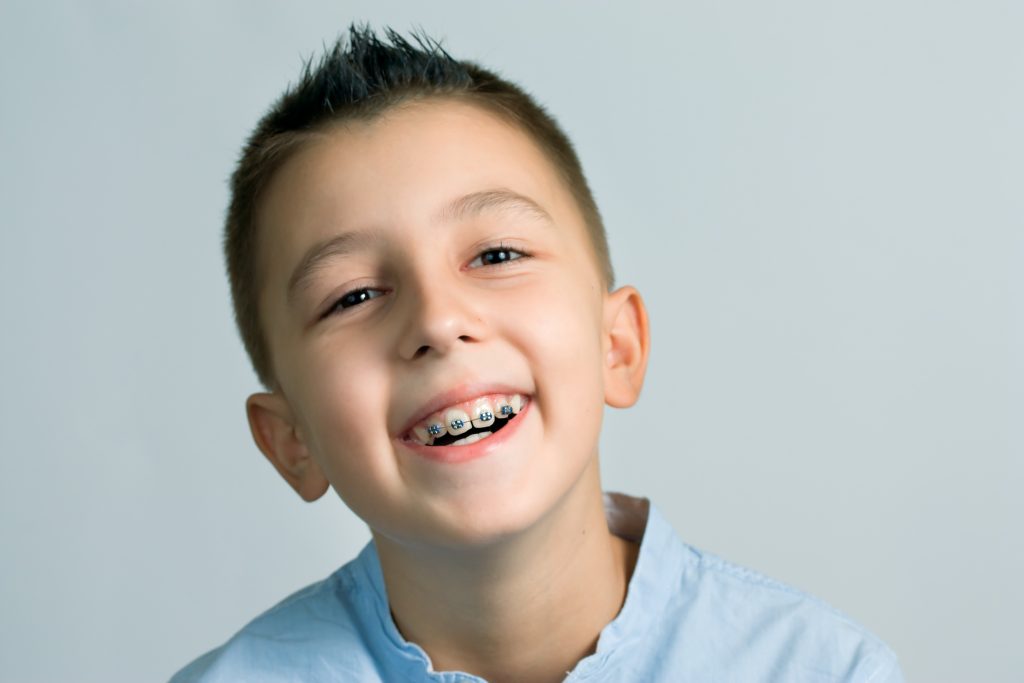Orthodontics is a fairly common term, with most people having come across it at least once or twice. However, recognizing something doesn’t necessarily mean understanding it! Maybe you’ve heard about orthodontics in passing, but aren’t sure what it encompasses, or what an orthodontist actually does. Clauss Orthodontics is dedicated to keeping patients informed, because we believe an educated patient is better able to actively participate in their treatment. To clarify what Dr. Clauss can do for you and your family, we’re going to take a look at exactly what orthodontics is, and talk about the many ways it can benefit you.
What, exactly, is orthodontics?
Simply put, orthodontics is a specialized branch of dentistry that focuses on correcting teeth and jaws that are improperly positioned. After four years of college, and four years in dental school, orthodontists go on to do two or more years of orthodontic education in an ADA-approved orthodontic training program. As you can imagine, by the time they’re able to put “orthodontist” beside their name, they have learned and know a lot about teeth in general, and orthodontic care specifically.
There are many dental issues orthodontists can treat that help ensure overall oral health for you and your family. Orthodontics target a wide range of health issues. Crooked teeth are harder to keep clean, which means the risk for tooth decay and periodontal disease is increased. Something like misalignment may sound simple, but has been known to cause extra stress on the chewing muscles that may eventually lead to headaches, TMJ syndrome, or neck, shoulder and back pain. Many issues also tend to be cosmetic in nature. For an obvious example, teeth that are crooked can detract from your appearance, which may lead to decreased self-confidence and lowered self-esteem. All of these issues, and more, can be evaluated and potentially treated by an experienced orthodontist like Dr. Clauss.
Is orthodontic treatment an option for you?
Dr. Clauss is highly trained and skilled in determining who would be likely to benefit from orthodontic treatment. We use a number of different diagnostic tools for this, including:
- a full medical and dental health history
- a clinical exam
- special X-rays and photographs
- 3D scans of your teeth and bite
After a review of these items, Dr. Clauss will discuss with you the results, and help you decide which, if any, orthodontic procedures would be right for you. A customized treatment plan will then be formulated based on your specific orthodontic needs and goals.
Many common dental issues can benefit from orthodontic care. If you have one or more of the following problems, schedule your free consultation with us to learn if you could be a good candidate for orthodontic treatment with Clauss Orthodontics.
- Overbite — this occurs when the upper front teeth lie too far forward and stick out over the lower teeth.
- Underbite — this can often result in a “bulldog” appearance, where the lower teeth are too far forward or the upper teeth are too far back.
- Crossbite — this one is a bit complicated to explain! Essentially, with normal bites, the upper teeth will be out over the top of the lower teeth when biting down normally. When a crossbite is present, this doesn’t occur. There are a few different types of crossbites, depending on where the upper teeth fall in relation to the lower ones.
- Open bite — this is present if there’s a space between the biting surfaces of the front or side teeth when the back teeth bite together.
- Misplaced midline — this is a situation in which the center of the upper front teeth doesn’t line up with the center of the lower front teeth.
- Spacing — this happens when there are gaps in between the teeth as a result of missing teeth or teeth that don’t “fill up” the mouth.
- Crowding — in this scenario, there are simply too many teeth for the dental ridge to accommodate without disrupting their natural position.
What kind of orthodontic treatment options are there?
Orthodontic treatment will generally be based on several different types of orthodontic appliances. These may be either fixed or removable, and are used to help move the teeth into more desirable positions over time. They can also retrain the muscles, and affect the growth of the jaws. Both types of appliances work by placing gentle, continuous pressure on the teeth and jaws. Dr. Clauss will determine the severity of your problem, using this as one of the deciding factors in choosing which orthodontic approach is likely to be the most effective for you.
What are some fixed orthodontic appliances?

Treatment times will always vary, depending on how easy or difficult a case may be, but the average treatment time with braces tends to be around 24 months. Modern braces have made many improvements in recent years, and are now smaller, more comfortable, and much less obvious than they’ve ever been before. They’re also available in either traditional metal or clear ceramic braces for kids, teens and adults.
Fixed space maintainers: Baby teeth are sometimes lost prematurely through unexpected trauma, cavities, or any number of other occurrences. This will sometimes require a customized space maintainer, or spacer, to keep the space open until the permanent tooth erupts. This appliance consists of a band placed around a molar on each side, and a wire extended around the inside of the arch. This helps to prevent the remaining teeth from crowding the empty space.
What are some examples of removable orthodontic appliances?
Clear aligners: At the moment, clear aligners like those in the Invisalign system are the most popular alternative to traditional braces we offer, especially for our teen and adult patients. These aligners move teeth in the same way fixed appliances do, but without any of the hassle and restrictions that can often come with all those metal wires and brackets. Besides being virtually invisible, these aligners are also easily removable, making eating, drinking, brushing, and flossing much easier than they can be with braces.
Removable space maintainers: These serve basically the same function as the fixed space maintainers mentioned above, but are made with an acrylic base that fits over the jaw, and have a plastic or wire branch between specific teeth to keep the space between them open.
Jaw repositioning appliances: These are sometimes referred to as splints, and can be worn on either the top or lower jaw. They’re used to help train the jaw to close in a more favorable position.
Lip and cheek bumpers: These devices are designed to keep the lips or cheeks away from the teeth by relieving the pressure that the lip and cheek muscles can exert.
Palatal expander: This works to widen the arch of the upper jaw using an appliance that fits across the roof of the mouth. Outward pressure is placed on the appliance by a screw mechanism, widening the entire palatal area.
Removable retainers: These are likely the most easily recognizable removable appliance! There are a number of types of removable retainers, but they’re all worn after orthodontic treatment is completed to help keep teeth straight by preventing them from shifting back to their previous position.
The orthodontic experience with Clauss Orthodontics
By investing in orthodontic treatment with Clauss Orthodontics, you’re investing in oral health that can last you a lifetime. A beautiful, healthy smile can positively impact your life in many ways, from cosmetic benefits to improving your overall health.

If you’re in Watertown, Woodbury, or the surrounding area, and are wondering if orthodontic treatment could benefit you, get in touch with us today to schedule your free consultation. With two convenient locations, early morning and select Saturday appointments, and flexible, no interest financing, Clauss Orthodontics is here to turn your orthodontic journey into a success story!
